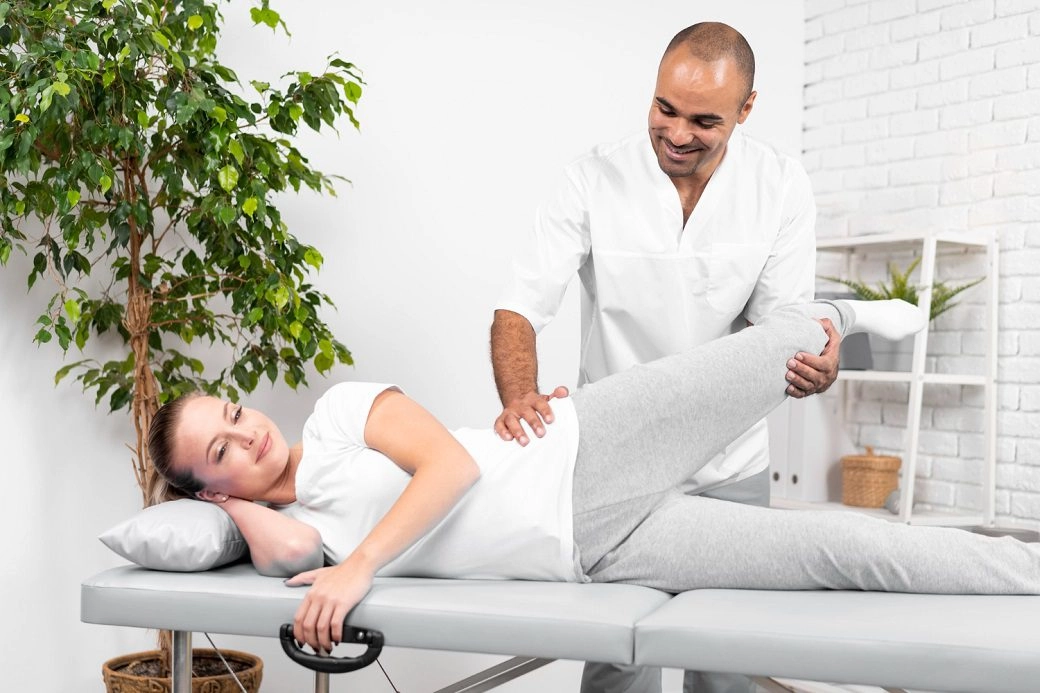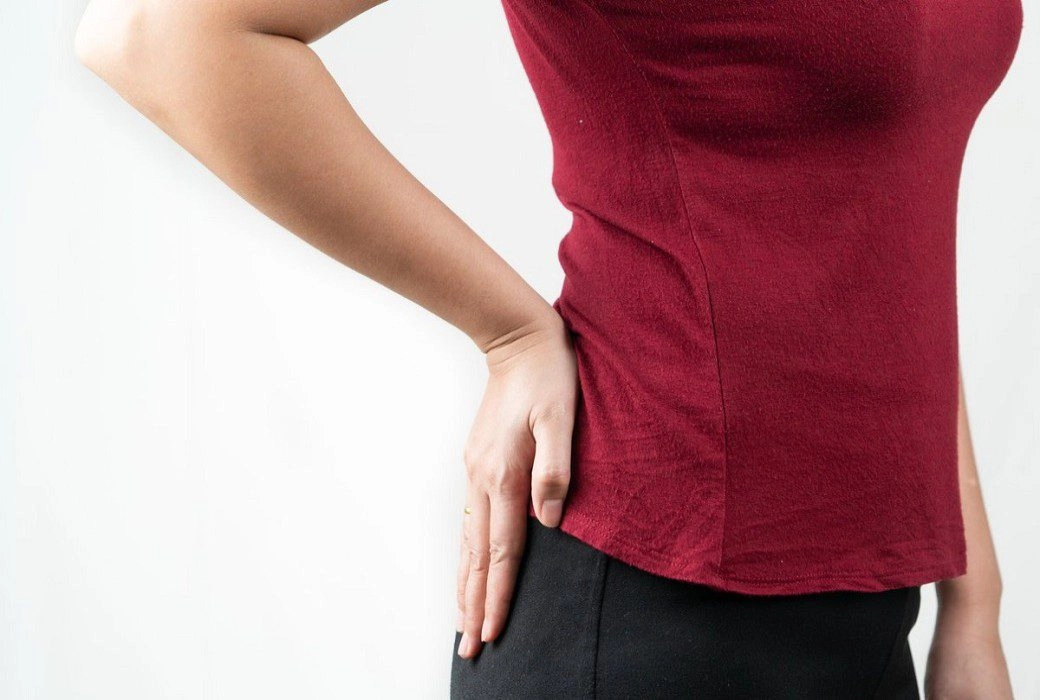Scoliosis, which causes sideways curvature of the spine, can cause many different symptoms. However, one of the most common symptoms has to do with the hips. Let your Anchorage chiropractor explain.
Scoliosis can, and often does, cause hip pain. This is because the curvature of the spine can pull the hips out of alignment, making one higher than the other. As a result, one hip takes more weight than the other. This can cause pain in the overloaded hip, especially after standing or walking.
What Does Scoliosis Hip Pain Feel Like?
Although idiopathic scoliosis most often occurs in children, it’s not often accompanied by pain. Sometimes this type of scoliosis can continue unnoticed and undiagnosed until adulthood. Once the spine stops growing, even a small sideways curvature of the spine can cause hip pain.
Scoliosis hip pain varies but is generally characterized by:
- A sharp or throbbing pain.
- A pain that increases with activity (i.e. walking, running, standing for long periods).
- Stiffness and pain after sitting or lying down for long periods.
- Sciatic nerve pain.
- Pain accompanied by numbness and tingling.
- Tight hip flexors.
The amount of pain caused in the hips by scoliosis depends on several factors. The severity of the misalignment, the type of scoliosis (degenerative or idiopathic), body weight, activity level, and lifestyle.
Someone who is obese and who suffers from scoliosis is more likely to have severe hip pain simply because they’re carrying more weight than a non-obese person. On the flip side, physical activity may cause the pain to worsen. It varies from person to person.
Which Hip is Higher in Scoliosis?
If you’re unsure whether one hip is higher than the other, you may need to seek medical help to determine. When scoliosis progresses enough, the curvature will make the uneven hips apparent to others. However, only about 10% of scoliosis cases progress this far.
The hip that becomes painful is generally the one that carries more weight. This will cause the muscles to tire faster and may put undue stress on that hip joint.
You may be able to tell which hip is higher to see if you need to realign your hips. To do this, stand in your bare feet in front of a mirror holding a piece of string in your hands. Place the heel of each hand on one hip bone. The string between your two hands will be tilted if your hips are uneven and it will be straight if they’re not.
Scoliosis Hip Pain in Adults
As mentioned above, hip pain due to scoliosis is most common in adults. But it’s certainly not the only cause of hip pain for adults. Unless you were diagnosed with scoliosis as a child, you may be suffering from de novo scoliosis, also known as degenerative scoliosis.
De Novo (Degenerative) Scoliosis
As we age, the spinal discs between our vertebrae can degrade. This can cause the spine to develop a sideways curve, which can pull the hips out of alignment. Studies suggest that this kind of scoliosis is more common than previously thought.
Loss of bone density can also contribute to scoliosis in older adults. Due to bone density loss due to menopause, women are more susceptible to this at a younger age than men. However, past the age of 70, both men and women lose the same amount of bone density on average.
Unfortunately, there’s no cure for scoliosis. But don’t worry, because that doesn’t mean you must deal with hip pain for the rest of your life. There are plenty of effective natural remedies that incorporate exercises, nutrition, posture correction, chiropractic care, and physical therapy. You can learn more at your Anchorage-based chiropractic office. But first, let’s take a look at hip pain exercises.
Chiropractor in Anchorage Gives Scoliosis Hip Pain Exercises
If you do have uneven hips, these exercises can help to relieve pain and strengthen weak muscles. But they’re best done in addition to professional care options, which we’ll discuss below.
Hip Stretch
- Lie on your back with both legs straight out.
- Lift your right leg and pull the knee toward you with your hands, keeping your foot pointed up.
- Pull the knee to your chest as much as you can without causing yourself pain.
- Hold for 5 to 8 seconds.
- Release and switch to the other leg.
- Repeat 4 to 6 times on each leg.
Opposite Leg Split Stretch
- Sit on the floor with your legs straight and as wide as they can go.
- With your right hand, reach toward your left foot, touching it if you can.
- Return to original position.
- With your left hand, reach toward your right foot.
- Repeat 6 to 8 times.
Cat and Cow
- Stand on all fours, your hips over your knees, your hands under your shoulders, and your head in-line with your spine, looking down at the floor.
- As you inhale, arch your spine toward the ceiling pushing up through your arms and legs.
- Hold for a few seconds.
- As you exhale, push your chest and stomach toward the floor.
- Hold for a few seconds.
- Repeat 8 to 12 times.
Other Stretches
Try these other stretches for hip pain and scoliosis.
- Side Plank
- Superman
- Child’s Pose
- 90/90 Stretch
- Upward Dog
- Downward Dog

Anchorage-Based Chiropractic Care for Scoliosis Hip Pain
Stretching is a good start, but if your hips are uneven enough to cause you pain, you’ll want to seek chiropractic care for scoliosis. A chiropractor can perform spine and hip alignments, which can get to the root cause of the issue.
But chiropractors do much more than just help to realign your spine and hips. They also help relieve pain, stretch muscles, and correct posture. One study showed that multimodal chiropractic care for adult scoliosis was found to be very beneficial even two years after treatment ceased.
If you’re experiencing de novo scoliosis because of bone density loss, a chiropractor can help by recommending nutrition and lifestyle tips. Instead of just treating the symptoms, a chiropractor can help manage the cause. They also work with physical therapists to give you all-around care to get you back on your feet.
This is why seeing your local Anchorage chiropractor for hip pain should always be the first stop for non-invasive, drug-free, and safe treatment options. Whether you know you have some form of scoliosis, or just have painful hips, a chiropractor can help.
Resources:
https://www.aafp.org/afp/2001/0701/p111.html#afp20010701p111-b1
https://link.springer.com/content/pdf/10.1007/s00586-020-06453-0.pdf
https://www.healthline.com/health/uneven-hips
https://www.sciencedirect.com/science/article/abs/pii/S1556370711000915










